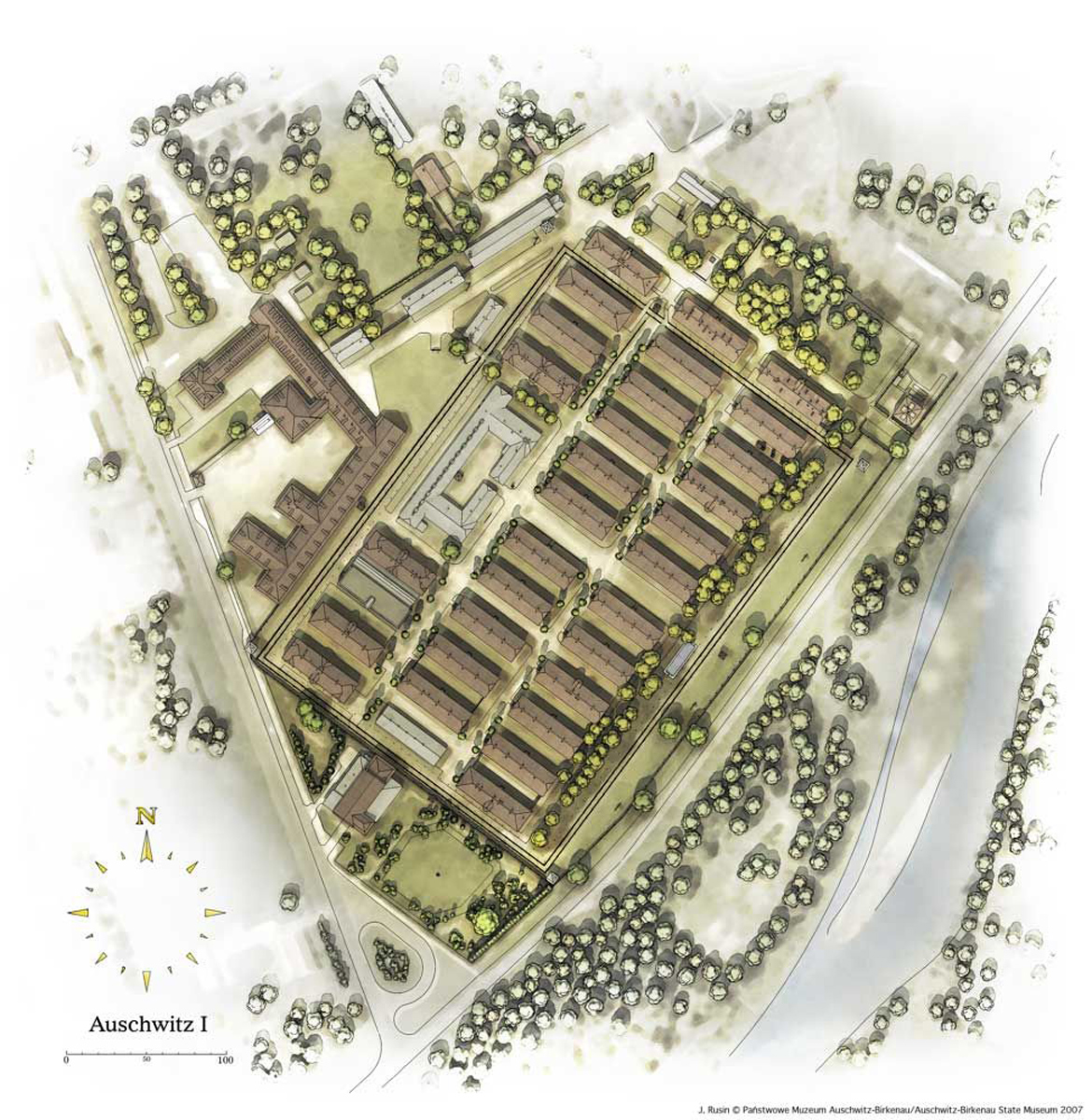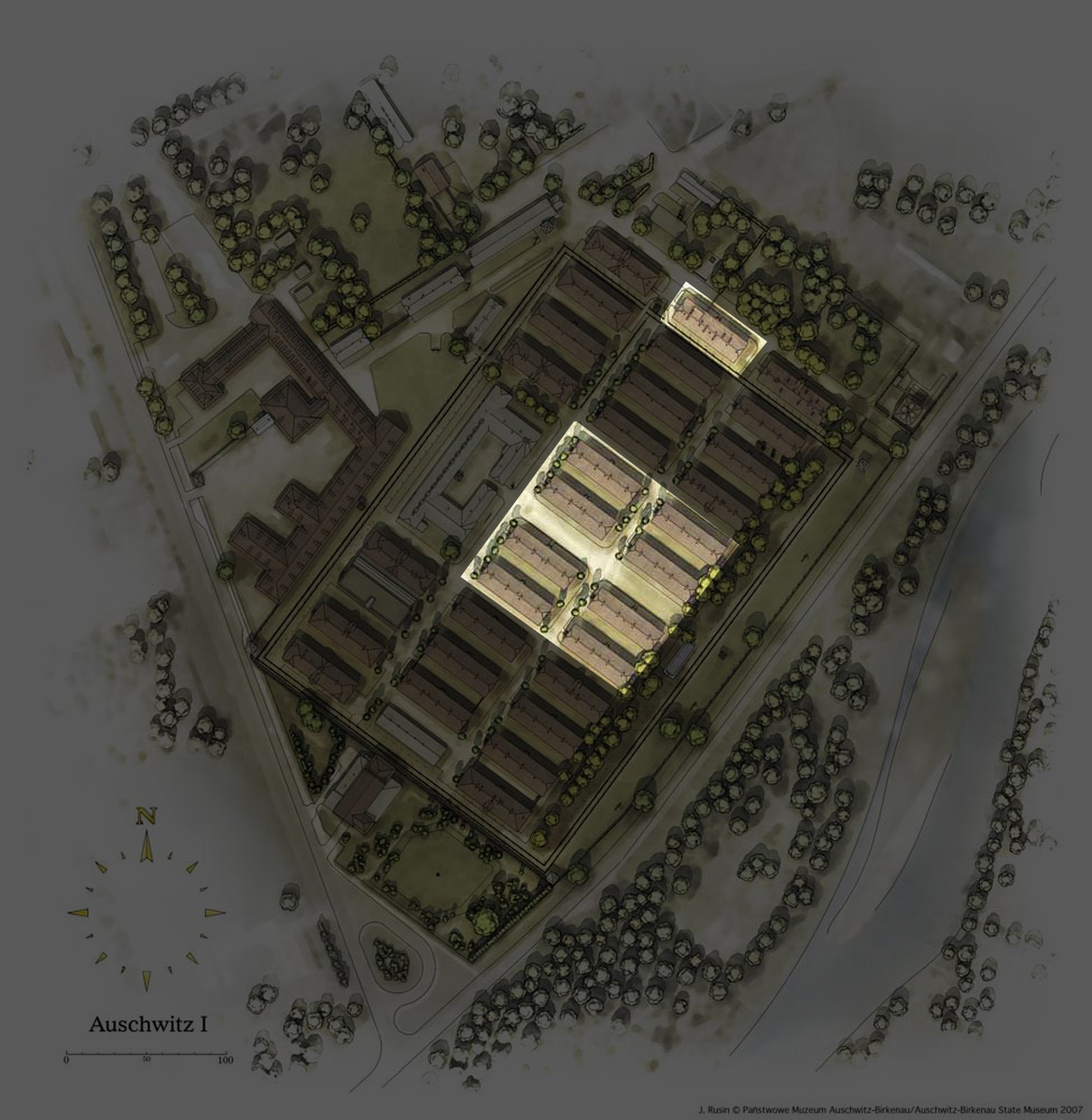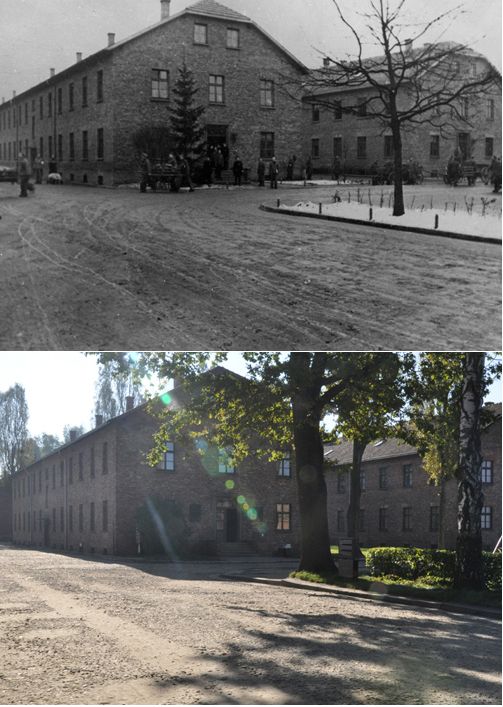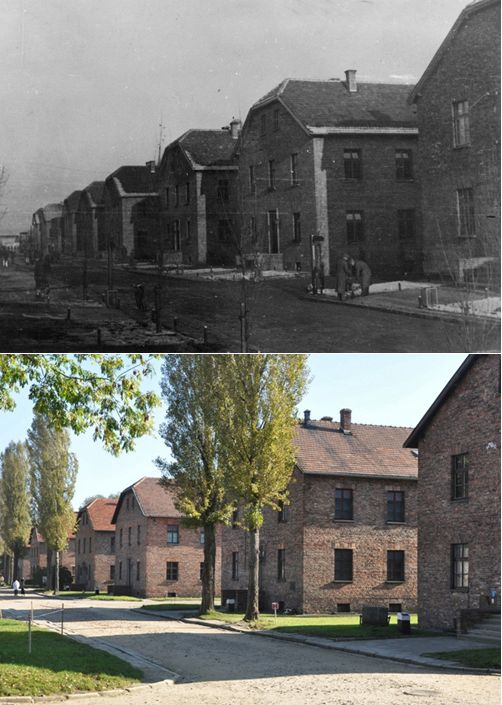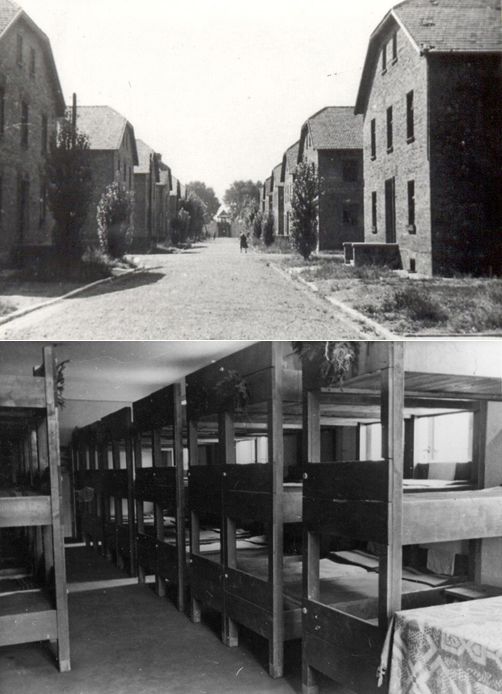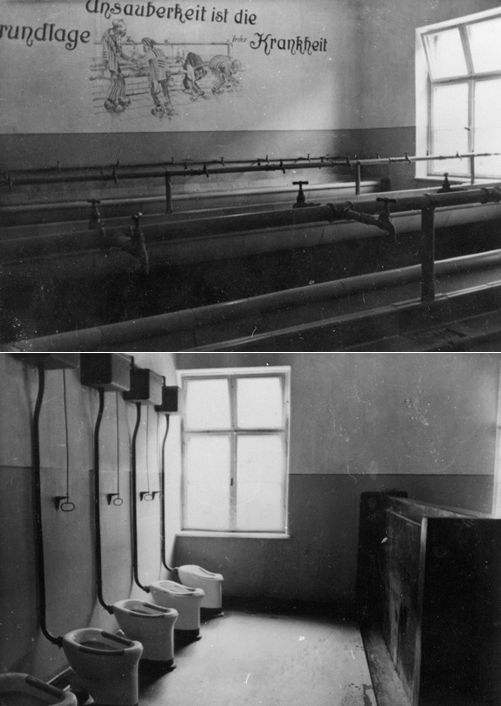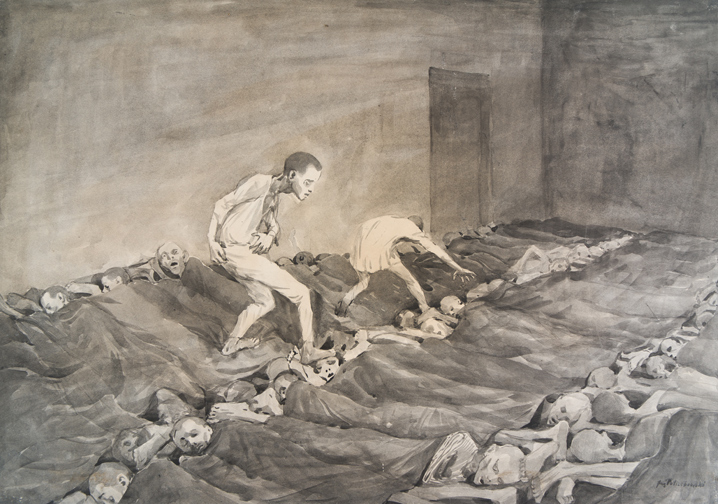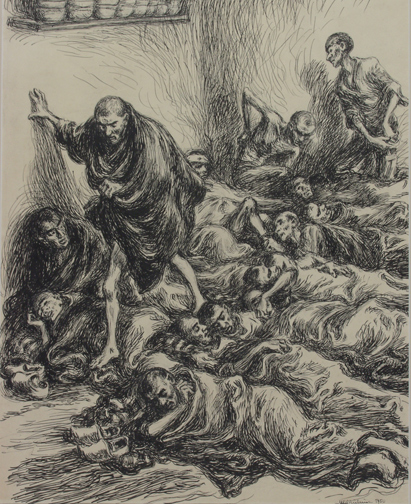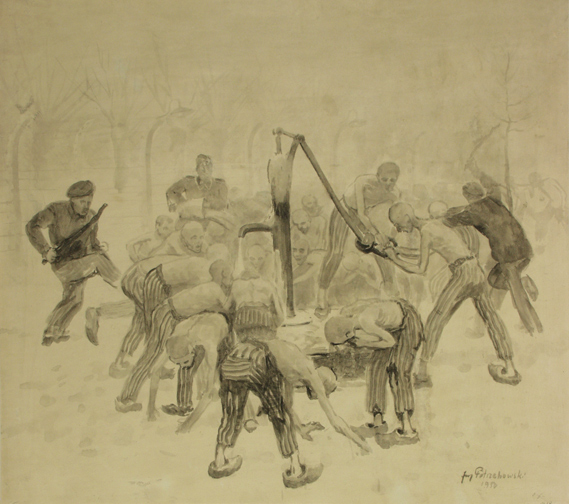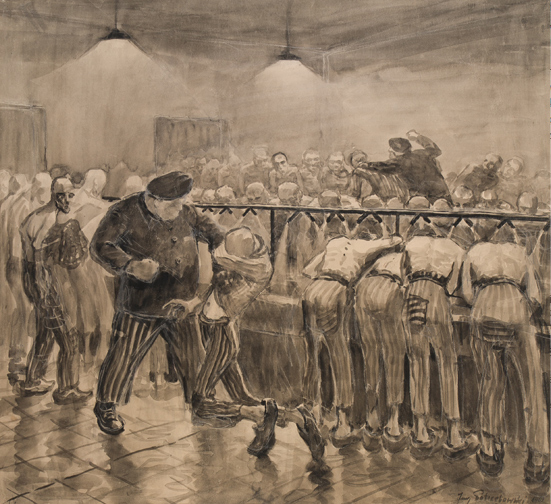Auschwitz from the very start functioned as an extermination camp in which the terrible living conditions created by the SS authorities contributed to the physical exhaustion and death of prisoners.
The camp adapted 20 brick built blocks (6 two-storey and 14 single-storey) from a former Polish Army compound. After adding extra storeys to the single-storey blocks and building eight new blocks from scratch, a camp complex of 28 brick built blocks was formed. Most of these were used to house prisoners, while the remainder were used as the camp hospital, warehouses, offices and a jail.
There were usually two large rooms on the first floor and several smaller chambers on the ground floor. The two-storey blocks were officially intended for approximately 700 prisoners. However, there were situations when the number rose to even 1,200.

